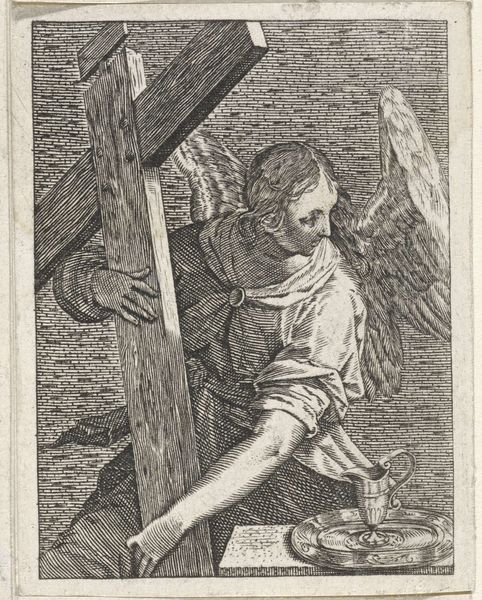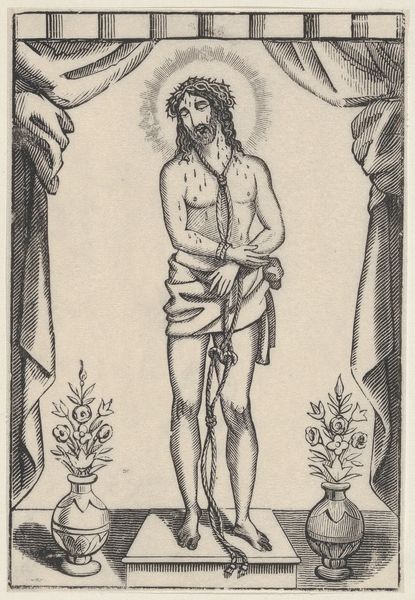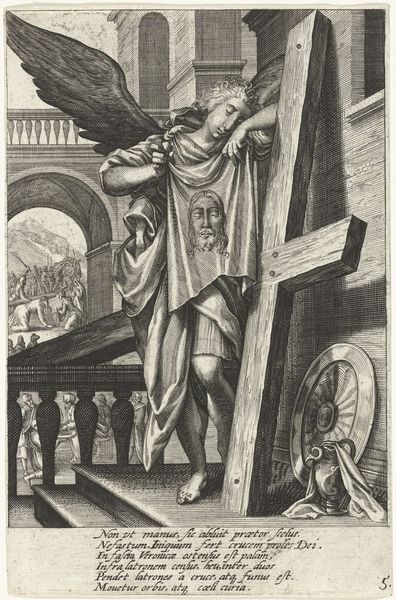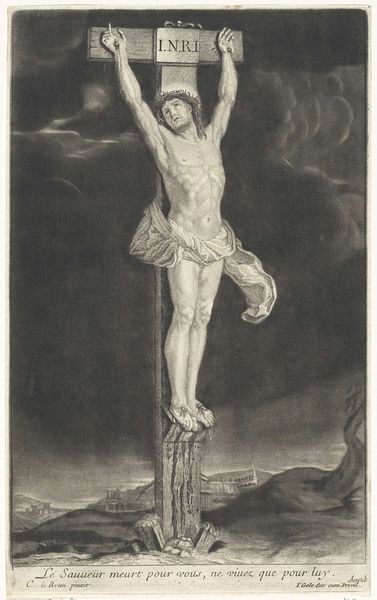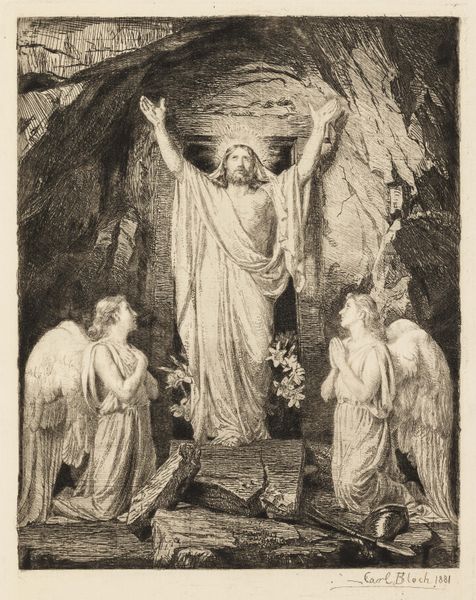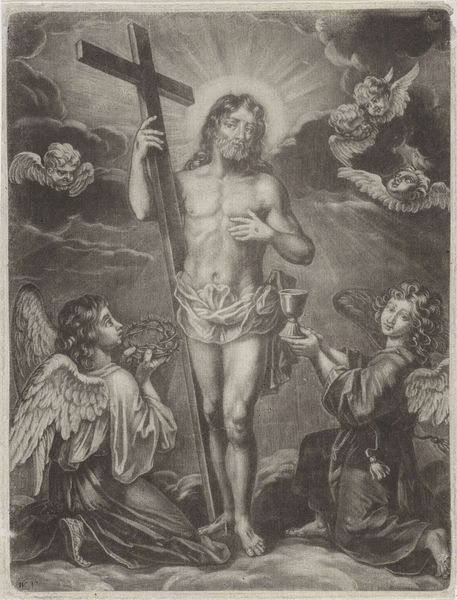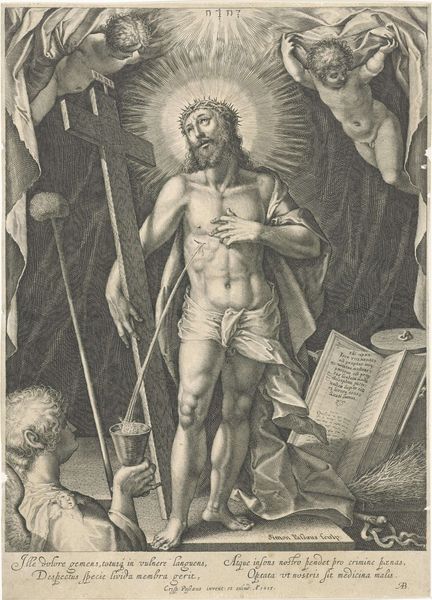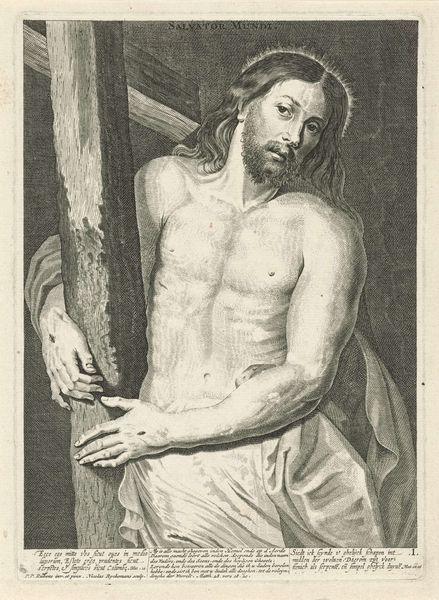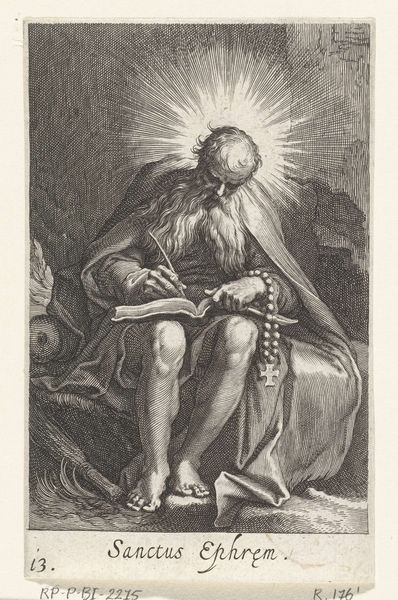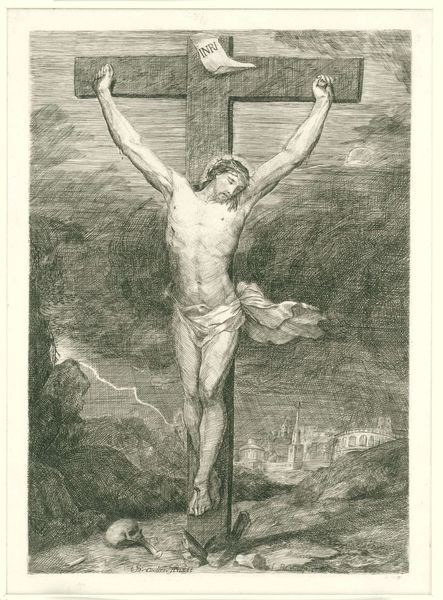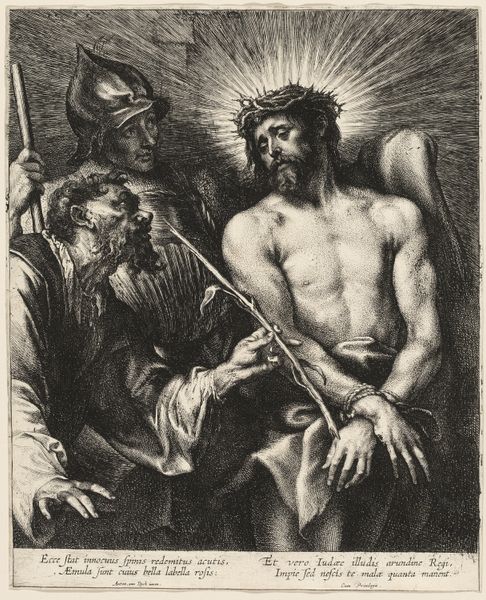
engraving
#
baroque
#
old engraving style
#
figuration
#
line
#
history-painting
#
engraving
Dimensions: height 107 mm, height 79 mm
Copyright: Rijks Museum: Open Domain
Editor: This engraving, titled "Engel met kruis en wasbekken" or "Angel with cross and washbasin," is attributed to Karel van Mallery and dates from roughly 1581 to 1645. It’s currently held at the Rijksmuseum. What immediately strikes me is its somber mood, reinforced by the linear quality of the engraving and the rather grave expression of the angel. What do you make of it? Curator: This image, created during a period of intense religious and political upheaval, demonstrates the potent intersection of faith and art. Engravings like this served a vital role in disseminating religious ideologies during the Counter-Reformation. Consider how the angel is actively engaged in purification – washing with water collected, perhaps, from Christ’s wounds on the cross. It signifies the Catholic Church's emphasis on sacraments and penance in contrast to contemporary protestant beliefs. Do you notice the inscription at the bottom? Editor: Yes, it’s in Latin. I can’t read it fluently, but something about purging sin with holy water? Curator: Exactly! And it speaks to the power of the Church to offer redemption through ritual cleansing. Think about who might have owned or viewed this print. Likely individuals deeply entrenched in a very specific interpretation of religious doctrine, reinforced through readily available imagery. Does understanding its political and social context shift how you see its ‘somber’ mood? Editor: Absolutely! It’s less about sadness now, and more about the weighty responsibility associated with spiritual cleansing. The line work and composition serve the message. Curator: Precisely. It’s a propaganda piece as much as it is a work of art, inextricably linked to the social forces of its time. Editor: I had not considered how the piece might participate in what was, in essence, an image war. That changes everything! Thanks.
Comments
No comments
Be the first to comment and join the conversation on the ultimate creative platform.
